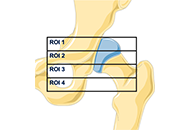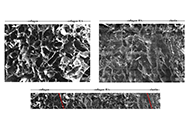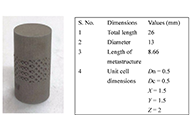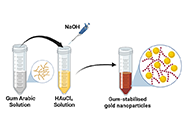Stress-shielding in aseptic loosening on the 3D printed acetabular cup in hip arthroplasty: review article
The increasing number of prosthetic hip replacement surgeries and their growing indication have led to a growing interest in understanding the factors that influence their long-term success. Total h
[...] Read more.
The increasing number of prosthetic hip replacement surgeries and their growing indication have led to a growing interest in understanding the factors that influence their long-term success. Total hip arthroplasty (THA) failure is mainly due to aseptic loosening. More rarely septic mobilization may occur. In the first case, many variables influence the bone-implant relationship and periprosthetic bone remodeling. Stress-shielding is the most evident but not fully explained manifestation of the bone implant interaction. Recently, three-dimensional (3D) printed titanium orthopedic implants have offered new perspectives in the field of hip prosthetics, enabling the customization and production of acetabular cups with enhanced biocompatibility. This review aims to evaluate the efficacy and reliability of 3D printed acetabular cups from the perspective of aseptic failure particularly related to the stress-shielding. The most recent clinical and preclinical studies will be reviewed, exploring the benefits and challenges associated with the use of these emerging technologies. Key factors, such as biocompatibility, mechanical stability, osseointegration, and wear resistance.
Antonio Ziranu ... Greta Tanzi Germani
View:1648
Download:64
Times Cited: 0
The increasing number of prosthetic hip replacement surgeries and their growing indication have led to a growing interest in understanding the factors that influence their long-term success. Total hip arthroplasty (THA) failure is mainly due to aseptic loosening. More rarely septic mobilization may occur. In the first case, many variables influence the bone-implant relationship and periprosthetic bone remodeling. Stress-shielding is the most evident but not fully explained manifestation of the bone implant interaction. Recently, three-dimensional (3D) printed titanium orthopedic implants have offered new perspectives in the field of hip prosthetics, enabling the customization and production of acetabular cups with enhanced biocompatibility. This review aims to evaluate the efficacy and reliability of 3D printed acetabular cups from the perspective of aseptic failure particularly related to the stress-shielding. The most recent clinical and preclinical studies will be reviewed, exploring the benefits and challenges associated with the use of these emerging technologies. Key factors, such as biocompatibility, mechanical stability, osseointegration, and wear resistance.
 Stress-shielding in aseptic loosening on the 3D printed acetabular cup in hip arthroplasty: review articleOpen AccessReviewThe increasing number of prosthetic hip replacement surgeries and their growing indication have led to a growing interest in understanding the factors that influence their long-term success. Total h [...] Read more.Antonio Ziranu ... Greta Tanzi GermaniPublished: August 31, 2024 Explor BioMat-X. 2024;1:231–240
Stress-shielding in aseptic loosening on the 3D printed acetabular cup in hip arthroplasty: review articleOpen AccessReviewThe increasing number of prosthetic hip replacement surgeries and their growing indication have led to a growing interest in understanding the factors that influence their long-term success. Total h [...] Read more.Antonio Ziranu ... Greta Tanzi GermaniPublished: August 31, 2024 Explor BioMat-X. 2024;1:231–240 A tri-layer tissue engineering heart valve scaffold based on atelocollagen, hyaluronic acid, and elastinOpen AccessOriginal ArticleAim: This study aims to fabricate and characterise a novel tri-layer scaffold based on type I atelocollagen, hyaluronic acid (HA), and a novel fibrillar elastin gel, mimicking the native heart va [...] Read more.Zhaoying Ma ... Jan T. CzernuszkaPublished: August 29, 2024 Explor BioMat-X. 2024;1:215–230
A tri-layer tissue engineering heart valve scaffold based on atelocollagen, hyaluronic acid, and elastinOpen AccessOriginal ArticleAim: This study aims to fabricate and characterise a novel tri-layer scaffold based on type I atelocollagen, hyaluronic acid (HA), and a novel fibrillar elastin gel, mimicking the native heart va [...] Read more.Zhaoying Ma ... Jan T. CzernuszkaPublished: August 29, 2024 Explor BioMat-X. 2024;1:215–230 On 17-4PH stainless steel dental implant for premolar 4 in canine under compressive loading: effect of solid and octet metastructureOpen AccessOriginal ArticleAim: The study aims to analyze the canine’s implant behaviour under compressive loading [to be installed in a maxilla at a premolar 4 (PM4) location]. After simulation of various mechanical pro [...] Read more.Bharat Kalia ... Gurwinder SinghPublished: August 23, 2024 Explor BioMat-X. 2024;1:202–214
On 17-4PH stainless steel dental implant for premolar 4 in canine under compressive loading: effect of solid and octet metastructureOpen AccessOriginal ArticleAim: The study aims to analyze the canine’s implant behaviour under compressive loading [to be installed in a maxilla at a premolar 4 (PM4) location]. After simulation of various mechanical pro [...] Read more.Bharat Kalia ... Gurwinder SinghPublished: August 23, 2024 Explor BioMat-X. 2024;1:202–214 Gum Arabic-assisted green synthesis of gold nanoparticles as fluorescence modulator for potential analytical applicationsOpen AccessOriginal ArticleAim: To demonstrate a simple, eco-friendly, and cost-effective green method to synthesize gold nanoparticles (AuNPs) using the aqueous extract of gum Arabic (GA) as a reducing and stabilizing age [...] Read more.Ahmed T. Algahiny ... Fryad Z. HenariPublished: July 28, 2024 Explor BioMat-X. 2024;1:190–201
Gum Arabic-assisted green synthesis of gold nanoparticles as fluorescence modulator for potential analytical applicationsOpen AccessOriginal ArticleAim: To demonstrate a simple, eco-friendly, and cost-effective green method to synthesize gold nanoparticles (AuNPs) using the aqueous extract of gum Arabic (GA) as a reducing and stabilizing age [...] Read more.Ahmed T. Algahiny ... Fryad Z. HenariPublished: July 28, 2024 Explor BioMat-X. 2024;1:190–201